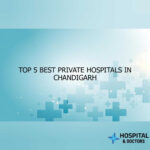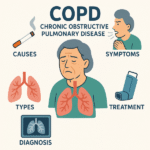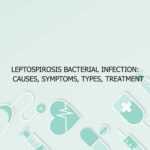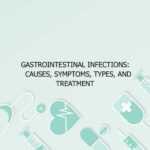Now Reading: Varicose Veins: Signs, Symptoms, Stages, Diagnosis & Treatment
- 01
Varicose Veins: Signs, Symptoms, Stages, Diagnosis & Treatment
Varicose Veins: Signs, Symptoms, Stages, Diagnosis & Treatment
Varicose veins are a common and often underestimated medical condition affecting millions of people globally. These are enlarged, twisted veins that typically appear blue or dark purple and are most commonly found in the legs and feet. While they may start as a cosmetic concern, varicose veins can lead to significant discomfort, complications, and even serious health issues if left untreated. This comprehensive guide aims to provide detailed insights into the signs, symptoms, stages, diagnosis, and treatment options for varicose veins, along with answers to frequently asked questions.
Signs and Symptoms of Varicose Veins
The most visible sign of varicose veins is the appearance of dark, bulging, twisted veins just beneath the surface of the skin, particularly on the legs and ankles. However, symptoms can vary depending on the severity of the condition. Common symptoms include:
- Aching or heavy feeling in the legs
- Burning, throbbing, or muscle cramping in the lower legs
- Swelling in the ankles and feet
- Itching around one or more veins
- Skin discoloration around the varicose vein
- Pain that worsens after sitting or standing for a long time
In some cases, varicose veins may lead to complications like bleeding, ulcers, and deep vein thrombosis (DVT), necessitating prompt medical attention.
Stages of Varicose Veins
Varicose veins are often classified based on the CEAP (Clinical-Etiology-Anatomy-Pathophysiology) classification system. Clinically, they can be divided into six stages:
Stage 1: Telangiectasias or Spider Veins – Small, red or blue superficial veins visible on the skin.
Stage 2: Varicose Veins – Enlarged, twisted veins that are palpable.
Stage 3: Edema – Swelling of the legs without skin changes.
Stage 4: Skin Changes – Hyperpigmentation, eczema, or lipodermatosclerosis.
Stage 5: Healed Ulcer – Skin ulcer that has healed.
Stage 6: Active Ulcer – Ongoing ulceration, usually around the ankle area.
Diagnosis of Varicose Veins
Diagnosing varicose veins typically starts with a thorough physical examination and review of the patient’s medical history. Key diagnostic tools include:
- Visual Examination: Identifying visible signs like bulging veins and skin changes.
- Duplex Ultrasound: The gold standard for evaluating blood flow, valve function, and identifying venous reflux or blockages.
- Doppler Ultrasound: Assesses the direction and speed of blood flow in veins.
- Venography (Rarely Used): Involves injecting a contrast dye to view veins via X-ray.
- Photoplethysmography and Air Plethysmography: Non-invasive tests that help evaluate venous pressure and blood pooling.
These diagnostic methods help determine the extent of the disease and guide treatment planning.
Treatment of Varicose Veins
The treatment approach for varicose veins depends on the severity of the condition, the symptoms, and the patient’s preferences. Treatment can be broadly categorized into conservative management and interventional procedures.
Conservative Management:
- Compression Stockings: Help improve blood flow and reduce symptoms.
- Lifestyle Modifications: Elevating the legs, avoiding prolonged standing, and regular exercise.
- Weight Management: Reducing body weight can alleviate pressure on veins.
Minimally Invasive Procedures:
- Sclerotherapy: Injection of a solution into the vein to close it.
- Laser Therapy (EVLT): Uses laser energy to seal off affected veins.
- Radiofrequency Ablation (RFA): Heat-based procedure to close problematic veins.
Surgical Interventions:
- Vein Stripping and Ligation: Surgical removal of large varicose veins.
- Ambulatory Phlebectomy: Removal of smaller surface veins through small incisions.
- Endoscopic Vein Surgery: Used in advanced cases with ulcers.
Post-procedural care includes wearing compression garments and following up for evaluation and recurrence prevention.
Table: Overview of Varicose Veins
| Category | Description |
|---|---|
| Common Symptoms | Bulging veins, leg pain, swelling, itching, skin changes |
| Diagnostic Tools | Duplex ultrasound, Doppler test, physical exam |
| Stages | Stage 1: Spider veins to Stage 6: Active ulcer |
| Conservative Care | Compression stockings, leg elevation, weight loss |
| Procedures | Sclerotherapy, EVLT, RFA, Vein stripping, Ambulatory phlebectomy |
10 Frequently Asked Questions
What causes varicose veins and who is at risk?
Varicose veins develop due to weakened or damaged valves within the veins. When these valves fail, blood begins to pool instead of circulating back to the heart, leading to vein enlargement. Risk factors include genetics, age (especially over 50), gender (more common in women), obesity, pregnancy, prolonged standing or sitting, and hormonal influences such as birth control pills or hormone replacement therapy. Family history plays a strong role, and occupations that involve prolonged standing (e.g., nurses, teachers, retail workers) can increase risk. Although often seen as a cosmetic concern, varicose veins are a medical issue with potential complications like ulcers and thrombosis if not treated properly.
Are varicose veins only a cosmetic concern or can they cause complications?
While varicose veins often begin as a cosmetic issue, they can lead to several medical complications if left untreated. Chronic venous insufficiency, where blood pools in the legs, can result in swelling, pain, skin changes, and venous ulcers. In rare cases, superficial veins may rupture and bleed. There is also a small risk of deep vein thrombosis (DVT), a more serious condition involving clots in deeper veins. Advanced cases may result in lipodermatosclerosis, a condition where the skin becomes hardened and inflamed. Therefore, even mild symptoms warrant medical evaluation to prevent progression and improve quality of life.
How are varicose veins diagnosed by a healthcare provider?
Healthcare providers typically start with a physical examination and detailed history. The most effective diagnostic tool is duplex ultrasound, which combines traditional ultrasound with Doppler to evaluate the structure and flow of blood in the veins. This non-invasive test helps identify venous reflux (backflow of blood) and valve malfunctions. Additional imaging, such as Doppler ultrasound or venography, may be used in complex cases. Diagnosis is also guided by patient symptoms like swelling, pain, and skin changes. A comprehensive assessment enables tailored treatment planning, distinguishing between superficial vein issues and more serious underlying venous disorders.
What lifestyle changes can help manage or prevent varicose veins?
Certain lifestyle changes can help manage existing varicose veins and prevent their development. Regular physical activity, particularly walking, improves circulation and strengthens leg muscles. Elevating the legs above heart level reduces venous pressure. Avoiding prolonged periods of standing or sitting is crucial—take breaks to stretch or move around. Wearing compression stockings helps maintain proper blood flow. Maintaining a healthy weight reduces stress on the veins. A diet rich in fiber and low in salt can prevent constipation and water retention, which contribute to vein pressure. These changes are most effective when combined with medical treatments.
Are compression stockings effective in treating varicose veins?
Yes, compression stockings are a highly effective conservative treatment for varicose veins, particularly in the early stages or for symptom relief. These specially designed garments apply graduated pressure, with the highest compression at the ankle and decreasing up the leg. This helps improve blood flow, reduce swelling, and prevent blood from pooling in the veins. Compression stockings come in various strengths and lengths and should be fitted properly to be effective. While they don’t eliminate varicose veins, they significantly improve symptoms like pain, fatigue, and leg heaviness. They are often recommended post-procedure to support healing and prevent recurrence.
What is sclerotherapy and how does it work for varicose veins?
Sclerotherapy is a minimally invasive treatment where a sclerosant solution is injected directly into the affected veins. This irritates the vein lining, causing it to collapse and eventually be reabsorbed by the body. Blood flow is naturally redirected to healthier veins. Sclerotherapy is most effective for small to medium-sized varicose and spider veins. The procedure is quick, requires no anesthesia, and has minimal downtime. Multiple sessions may be required depending on the extent of the condition. It may cause temporary side effects like bruising or redness, but serious complications are rare. It’s a well-tolerated and widely practiced vein treatment method.
Can varicose veins recur after treatment?
Yes, varicose veins can recur after treatment, particularly if underlying venous insufficiency persists or if new veins become affected. Factors like genetics, lifestyle habits, pregnancy, and prolonged standing can contribute to recurrence. While procedures like endovenous ablation or sclerotherapy effectively close problematic veins, they do not address the root cause if systemic venous pressure remains high. Regular follow-up, use of compression stockings, and maintaining a healthy lifestyle reduce the chances of recurrence. New techniques are continually improving long-term outcomes, but ongoing care and preventive strategies remain crucial for sustained results.
When is surgery required for varicose veins?
Surgery is typically considered when less invasive methods fail, or in advanced stages with complications like ulcers or severe pain. Traditional vein stripping and ligation involve removing the affected veins through small incisions. Ambulatory phlebectomy targets superficial veins. Endoscopic vein surgery, where a small camera guides the procedure inside the vein, is reserved for cases with non-healing ulcers or extensive venous damage. Surgical intervention is usually performed under local or general anesthesia and may require a brief recovery period. With modern advancements, minimally invasive methods are preferred, but surgery remains a valuable option for complex or extensive varicose vein conditions.
Are there any risks associated with varicose vein treatments?
Most treatments for varicose veins are safe, especially when performed by trained professionals. However, like any medical procedure, risks exist. Sclerotherapy may cause allergic reactions, bruising, or skin discoloration. Laser and radiofrequency treatments carry risks of burns, nerve damage, or deep vein thrombosis, though these are rare. Surgical interventions may lead to infection, bleeding, or anesthesia-related complications. Compression therapy is generally safe but may cause discomfort or skin irritation if improperly fitted. Discussing treatment options, understanding potential side effects, and following post-procedure guidelines significantly minimize risks and ensure successful outcomes.
How can I prevent varicose veins from getting worse?
Preventing varicose veins from worsening involves a combination of lifestyle adjustments and medical support. Regular exercise, especially activities like walking and swimming, enhances circulation. Avoiding prolonged periods of standing or sitting, elevating legs, and using compression stockings are essential. Maintaining a healthy body weight and a balanced diet low in salt can prevent swelling and improve vascular health. It’s also helpful to avoid tight clothing that restricts blood flow. Regular checkups and early intervention at the first sign of discomfort can prevent complications and ensure long-term vein health.
Titles of 10 Medical Journals and Authors
- “Management of Varicose Veins and Associated Chronic Venous Disease” – Gloviczki P, Comerota AJ
- “Duplex Ultrasonography for Vein Assessment” – Labropoulos N, Mansour MA
- “Efficacy of Compression Therapy in Venous Disorders” – Rabe E, Partsch H
- “Minimally Invasive Treatment of Varicose Veins” – Almeida JI, Kaufman J
- “Radiofrequency Ablation vs Laser for Varicose Veins” – Mundy L, Merlin T
- “Sclerotherapy: Mechanisms and Outcomes” – Goldman MP, Guex JJ
- “Chronic Venous Insufficiency: Pathophysiology and Treatment” – Meissner MH, Moneta GL
- “Pregnancy and Varicose Veins: A Review” – Vasquez MA, Gasparis AP
- “Risk of DVT Post Varicose Vein Treatment” – Scovell SD, Kalish J
- “Long-Term Outcomes after Vein Stripping and Endovenous Therapy” – van Rij AM, Jiang P









